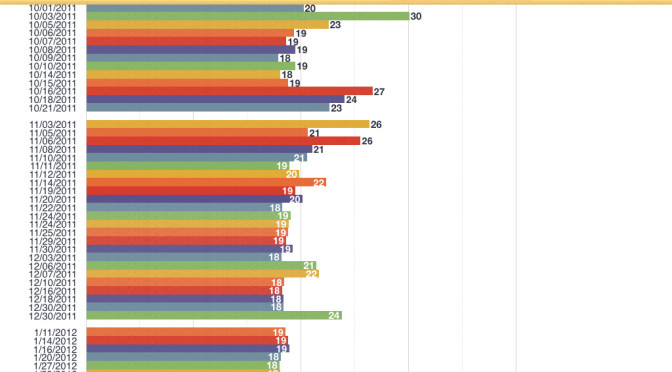Ok. We get it CES…wearable technology is what all the cool kids are going to be doing in 2014. At least that’s what you guys are betting on.
Personally, I’m super-excited about this. I’d love to have a watch that can grab my heart rate throughout the day and just “knows” when I’m working out and can even tell if I’m running or biking. Even better, give me all the analytic tools I need to sit for hours (while on the trainer) and pour over this data.
I’d even be happy with some kind of little gadget I could swallow that would attach itself to the lining of my stomach and analyze the composition everything I eat.
I get it.
I think there are some other people out there who get it too. I just don’t think there are that many of them. Don’t get me wrong–I think there are lots of people who would be curious about all these metrics initially, but I’m not sure how many people really want to use them long term.
I suspect people have an idea that once they can finally collect all this data, they’ll be able to improve their health. And, without a doubt, this data can help people do that. But the problem with all these personal metrics will be the same problem with all the other data out there…
If you aren’t using it to change something, the data isn’t going to change.
You can find out by looking at Mint that you spend more money on beer than you save every month, but that won’t matter unless you stop spending so much on beer and start saving more.
You can analyze your Twitter feed and realize that people aren’t engaging with you there, but that doesn’t really help you unless you do something to be more engaging.
You can find out by looking at your tomato garden that your plants are drying out, but if you don’t water them you still aren’t going to get any tomatoes.
Measurement for the sake of measurement is just academic.
Changing the measurement of something usually involves pain.

Saving money is harder than drinking beer.
Being engaging on Twitter takes effort. Ok, maybe not…you can just insult people and half of them will answer back.
Watering a garden is harder than not watering it. Wow. How lazy are you?
I hope we see a revolution of people who start trying to lower their resting heart rates, getting high scores for the number of steps they take daily, and all that. I also hope the prices on this stuff starts dropping soon, because I can’t wait to increase my own level of self-quantification.
Putting on a heart rate strap and “locating satellites” every time you step out of the house is for the birds!
[featured image credit]






